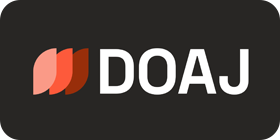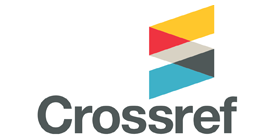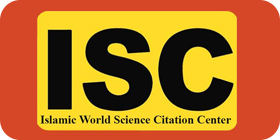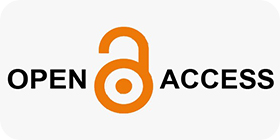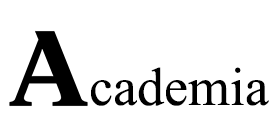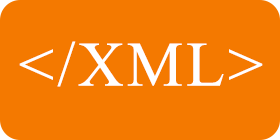Proposing a Suitable Integrated Model of Cooperative Learning Styles and Its Impact on Academic Achievement and Mathematics Anxiety Among Ninth-Grade Students: A Mixed-Methods Study
Keywords:
Cooperative learning, mathematics anxiety, academic achievement, instructional model, secondary education, collaborative teaching.Abstract
Purpose: This study aimed to evaluate the effectiveness of an integrated cooperative learning model in reducing mathematics anxiety and enhancing academic achievement among ninth-grade students.
Methods and Materials: A mixed-methods exploratory research design was employed. In the qualitative phase, a conceptual framework was developed by synthesizing cooperative learning strategies from existing literature and focus group interviews with educators. The final model incorporated multiple cooperative strategies, including the jigsaw method, problem-based learning, team games tournament, and peer teaching. In the quantitative phase, a quasi-experimental method with pretest-posttest and control group design was used. Sixty ninth-grade students from two mathematics classes in Tehran were randomly assigned to either the control group (traditional instruction) or the experimental group (integrated cooperative model). Mathematics anxiety was measured using a standardized questionnaire, and academic achievement was assessed through math tests. Data were analyzed using ANCOVA to control for pretest differences.
Findings: ANCOVA results indicated a significant effect of the integrated cooperative learning model on reducing mathematics anxiety, F(1, 57) = 83.449, p < .001, with a large effect size (η² = 0.594). Additionally, a significant improvement in academic achievement was observed in the experimental group compared to the control group, F(1, 56) = 6.236, p < .001, with a moderate effect size (η² = 0.100).
Conclusion: These findings support the use of structured, student-centered, and collaborative instructional methods as viable alternatives to traditional teaching, particularly in mathematics classrooms where anxiety and low achievement are prevalent.
Downloads
References
Abd Algani, Y. M., & Abu Alhaija, Y. F. (2021). The effect of the co-operative learning method on students’ academic achievement in mathematics. Multicultural Education, 7(3), 329-339. http://ijdri.com/me/wp-content/uploads/2021/03/35.pdf
Agwu, U. D., & Nmadu, J. (2023). Students’ interactive engagement, academic achievement and self- concept in chemistry: An evaluation of cooperative learning pedagogy. Chemistry Education Research and Practice, 24, 688-705. https://doi.org/10.1039/D2RP00148A
Akinoso, S. O., Olafare, F. O., & Akoinoso, Z. B. (2021). Effect of collaborative teaching approach on secondary school students achievement in attitude towards mathematics. International Journal of Research and Innovation in Applied Science (IJRIAS, 6(8), 1-5. https://www.researchgate.net/publication/354333183_Effect_of_Collaborative_Teaching_on_Secondary_School_Students'_Achievement_in_and_Attitude_towards_Mathematics
Batool, S., Tahir, T., & Habib, M. (2018). Relationship of teachers’ professional competence and achievement of students at university level. Turkish Journal of Teacher Education, 7(1), 51-60. https://tujted.com/makale/612
Bijani Kashk, L., & Pourzal, A. (2023). The Effectiveness of Collaborative Teaching Method on Reducing Math Anxiety in Elementary School Students. New Advances in Behavioral Sciences, 8(56), 81-87. https://ijndibs.com/article-1-808-fa.html
Busari, A. O., & Akinoso, S. O. (2020). Mathematics anxiety and personality characteristics of secondary schools’ students in Lagos State, Nigeria. Journal of Positive Psychology and Counselling, 6, 12-23. https://www.researchgate.net/publication/344451904_Mathematics_Anxiety_and_Personality_Characteristics_of_Secondary_Schools_Students_in_Lagos_State_Nigeria
Diani, A. H., & Dwijanto, D. (2020). Mathematical creative thinking ability observed from student learning motivation in Jigsaw Cooperative Learning assisted by problem cards. Unnes Journal of Mathematics Education, 9(1), 66-73. https://doi.org/10.15294/ujme.v9i1.38102
Gillies, R. M., Millis, B., & Davidson, N. (2023). Contemporary global perspectives on cooperative learning: Applications across educational contexts. Routledge. https://doi.org/10.4324/9781003268192
Habibi-Kaleybar, R. (2018). Studing the effectiveness of teaching the thinking and research lesson in a collaborative way on creative thinking and reading skills of primary schools’ sixth grade students. Thinking and Children, 8(2), 1-20. https://fabak.ihcs.ac.ir/article_4292.html
Ivone, F. M., Mukminatien, N., & Tresnadewi, S. (2020). Blended learning to strengthen high school teacher competencies in facing the 21st century. Graha Pengabdian Journal, 2(1), 18-26.
Jafari Sani, S., Keshavarzi, Z., & Seadatee Shamir, A. (2017). The effects of train composition with brain learning approach based on the Educational self-efficacy and written ability of students. Iranian Journal of Educational Sociology, 1(3), 56-65. http://iase-idje.ir/article-1-61-en.pdf
Jeong, H., Hmelo-Silver, C. E., & Jo, K. (2019). Ten years of computer-supported collaborative learning: A meta-analysis of CSCL in STEM education during 2005-2014. Educational Research Review, 28, 100284. https://doi.org/10.1016/j.edurev.2019.100284
Johnson, D. W., & Johnson, R. T. (2019). Social interdependence theory and cooperative learning: The teacher’s role. In R. M. Gillies, A. Ashman, & Terwel (Eds.), Teacher’s role in implementing cooperative learning in the classroom (pp. 9-37). Springer. https://doi.org/10.1007/978-0-387-70892-8_1
Kafshchian Moghadam, A., Maleki, H., & Sadeghi, A. (2024). Designing a Citizenship Rights Curriculum Model for the Second Period of Elementary Education [Research Article]. Iranian Journal of Educational Sociology, 7(2), 1-7. https://doi.org/10.61838/kman.ijes.7.2.1
Karamati, M. (2017). Collaborative Learning and Academic Achievement with a Metacognitive Approach. Zist-e Shad Publications.
Karamati, M. (2019). Implementing Collaborative Learning in the Classroom. Zist-e Shad Publications. https://www.researchgate.net/publication/366882383_Implementing_Collaborative_Learning_Method_in_Speaking_Class_Students'_View
Kim, J., Lee, H., & Cho, Y. H. (2022). Learning design to support student-AI collaboration: Perspectives of leading teachers for AI in education. Education and Information Technology, 27, 6069-6104. https://doi.org/10.1007/s10639-021-10831-6
Koskinen, R., & Pitkäniemi, H. (2022). Meaningful learning in mathematics: A research synthesis of teaching approaches. International electronic journal of mathematics education, 17(2), em0679. https://doi.org/10.29333/iejme/11715
Kovacheva, Z., Kaloyanova, K., Naydenova, I., & Saranova, E. (2022). Effective methods for teaching mathematics and informatics in higher education in the digital world. Tem Journal, 11(2), 876-881. https://doi.org/10.18421/TEM112-48
Mahmodi, A., Yarahmadi, Y., & Moradi, O. (2023). Comparing the Effectiveness of Reverse Learning Model and Cooperative Learning on the Academic Engagement of Secondary School Students. Sociology of Education, 10(1), 366-376. https://doi.org/10.22034/ijes.2023.2003494.1415
Marashi, H., & Khatami, H. (2017). Using cooperative learning to boost creativity and motivation in language learning. Journal of Language and Translation, 7(1), 43-58. https://www.researchgate.net/publication/324310825_Using_Cooperative_Learning_to_Boost_Creativity_and_Motivation_in_Language_Learning
Mathias, J., Saville, C., & Leech, S. (2024). Engaging non-mathematics students in mathematics learning through collaborative teaching. Teaching Mathematics and its Applications: An International Journal of the IMA, 43(1), 67-80. https://doi.org/10.1093/teamat/hrad003
Nazari, A. (2023). Impact of using the STAD model of cooperative learning on autonomy and attitude of Iranian secondary school EFL learners. Journal of Language, Culture, and Translation, 5(2), 48-76. https://journals.iau.ir/article_702922.html
Nazari Ardabili, S. Z., Benisi, P., & Vatankhah, H. (2024). Designing the Maturity Management Model of Educational Technology in Iranian Schools. Sociology of Education, 10(1), 314-326. https://doi.org/10.22034/ijes.2024.2022649.1536
Nelson, A. E. (2017). Methods faculty use to facilitate nursing students’ critical thinking. Teaching and Learning in Nursing, 12(1), 62-66. https://doi.org/10.1016/j.teln.2016.09.007
Ork, M., & Saif, M. H. (2022). The Effect of Collaborative Learning on Academic Achievement, Attitude, and Anxiety in Mathematics. Tehran.
Polat, Ö., Sezer, T., & Akyol, N. A. (2022). Collaborative learning with mind mapping in the development of social skills of children. Participatory educational research, 9(1), 463-480. https://doi.org/10.17275/per.22.25.9.1
Por Jafari shir Joposht, M., Shakibaei, Z., & Zarei, H. (2024). `Provide a Model for Parents' Educational Assistance to Empower Online Education in Critical Situations. Sociology of Education, 10(1), 31-44. https://doi.org/10.22034/ijes.2023.2006736.1434
Shi, Y., Ma, Y., MacLeod, J., & Yang, H. H. (2020). College students’ cognitive learning outcomes in flipped classroom instruction: A meta-analysis of the empirical literature. Journal of Computers in Education, 7(1), 79-103. https://doi.org/10.1007/s40692-019-00142-8
Tarawneh, S. H. (2012). The effect of using the cooperative teaching method on achievement in mathematics and the attitude toward it for female students of the eighth basic grade. Damascus University Journal, 28(3), 449-471.
Zanganeh, H., & Khodamoradi, H. (2017). The Impact of Task-Based Collaborative Learning on Learning and Retention of Ninth-Grade Students in Mathematics. Teaching Research, 5(1), 47-64. https://www.researchgate.net/publication/355789734_The_Impact_of_Task-based_Collaborative_Output_Activities_on_Learner_Engagement_in_Writing_Tasks
Downloads
Published
Submitted
Revised
Accepted
Issue
Section
License
Copyright (c) 2025 Ali Shahrabi Farahani, Mohammad Reza Keramati, Mohammad Javadipour, Keyvan Salehi (Author)

This work is licensed under a Creative Commons Attribution-NonCommercial 4.0 International License.

